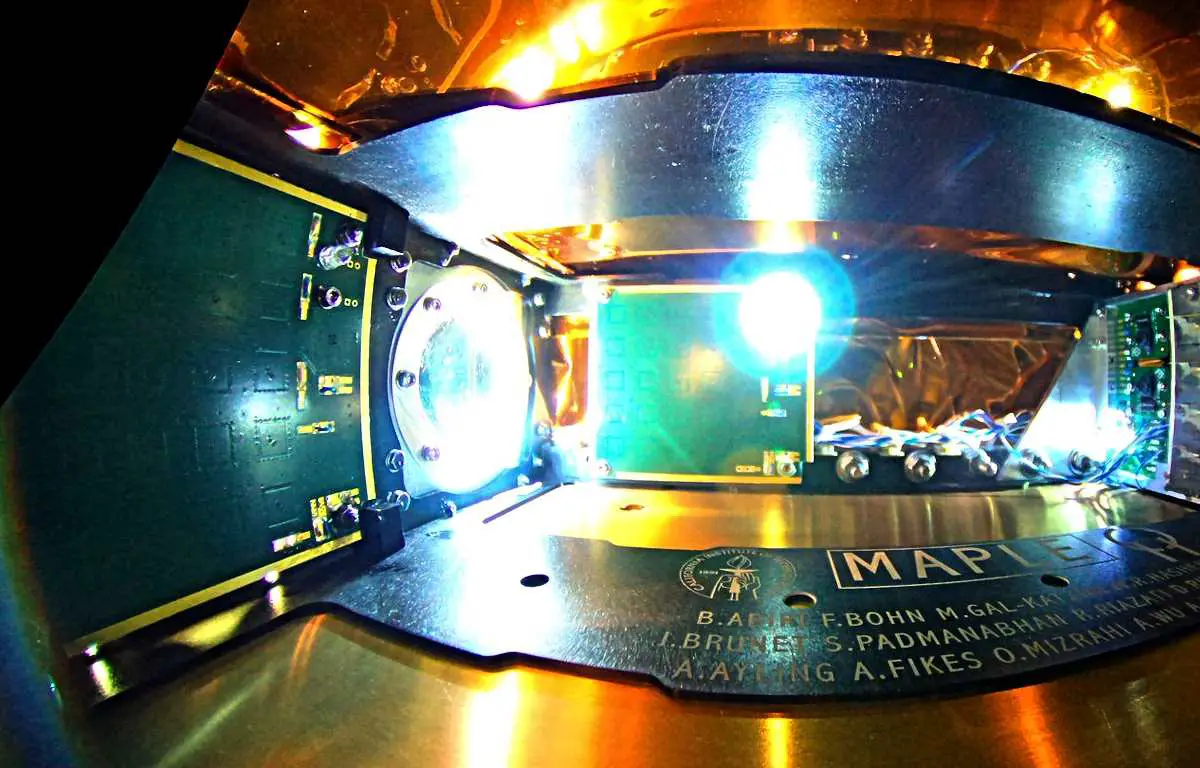
Solar Energy from Space to Earth: A Dream Come True
A space solar system prototype was launched into orbit in January before California Institute of Technology It operates and has demonstrated for the first time that it can transmit energy wirelessly in space and send detectable energy back to Earth.
The demonstration of wireless power transmission was conducted by MAPLE, one of three key technologies* tested by Space Solar Demonstrator (SSPD-1), Caltech’s Space Solar Project (SSPP) first space prototype. The purpose of the latter is to collect solar energy in space and transfer it to the Earth’s surface.
MAPLE, short for Microwave Energy Transmission Array, Low Orbit Experiment consists of an array of lightweight, flexible microwave energy transmitters that are powered by custom electronic chips built from low-cost silicon technologies. It uses this set of emitters to direct energy to desired areas.
For a TPMS to be possible, power transfer arrays must be lightweight to reduce the amount of fuel needed to launch into space, flexible to fold into a rocket-chargeable package, and universally low cost.
MAPLE was developed by a Caltech team led by Ali Hajimiri, Bren Professor of Electrical and Medical Engineering and co-director of SSPP.
“Thanks to the experiments we’ve done so far, we’ve got confirmation that MAPLE can successfully transmit power to receivers in space.Hajimere says.We were also able to program the board to direct its energy into the ground, which we’ve discovered here at Caltech. We tested it on Earth, of course, but we now know that it can survive the trip into space and work there.“
MAPLE includes two separate receiver arrays located approximately 30 cm from the transmitter to receive power, convert it into direct electric current (DC), and use it to illuminate a pair of LEDs to remotely show the entire transmission sequence of wireless power in space. MAPLE tested this in space by lighting each LED individually and rotating through them.
“As far as we know, no one has ever demonstrated wireless power transmission in space, even with very expensive rigid structures. We do this with our own light, flexible structures and integrated circuits. It’s the firstHajimere says.
MAPLE also includes a small window through which the grid can transmit power. This transmitted energy was detected by a receiver on the roof of Gordon and Betty Moore’s engineering lab on the Caltech campus in Pasadena.. The received signal appeared at the expected time and frequency, and showed the correct frequency offset as expected based on its trajectory from orbit.
Space solar power provides a way to harness the virtually unlimited source of solar energy for space, where power is constantly available without exposure to day-night cycles, seasons, and cloud cover. Surface.
when fully functional, SSPP will deploy a constellation of space modules that will collect sunlight and convert it into electricity, Then turn it into microwaves that are transmitted wirelessly over long distances to where they are needed, including places that currently lack access to reliable power.
“Flexible power transmission grids are key to the current design of Caltech’s vision of a sail-like array of solar panels that unfold once in orbit.says Sergio Pellegrino, Joyce and Kent Cressa Professor of Aerospace and Civil Engineering and co-director of SSPP.
“In the same way that the Internet democratized access to information, we hope that wireless power transmission will democratize access to energy,” says Hajimere. “No energy transmission infrastructure would be required on Earth to receive this energy. This means that we can send energy to remote areas and areas devastated by wars or natural disasters. “
“The transition to renewable energy, which is essential to the world’s future, is currently constrained by the challenges of energy storage and transmission. Transporting solar energy from space is an elegant solution that is one step closer to being achieved thanks to Bren’s generosity and insightsays Caltech President Thomas F. Rosenbaum.Donald Brin presented a formidable technological challenge that promises humanity a wonderful reward: a world powered by uninterrupted renewable energy.“
Individual SSPP modules They will be folded into bundles of about 1 cubic meterthen unfolded into flat squares about 50 meters apart, with solar cells on one side facing the sun and wireless power transmitters on the other side facing Earth.
The 50-kilogram SpaceX Transporter-6 SSPD rocket launched into space.
* SSPD features two other experiments in addition to MAPLE: DOLCE (Deployable Ultralight Orbiter Vehicle Experiment), a 1.8m x 1.8m structure demonstrating the modular spacecraft architecture, packaging system, and mechanisms for its deployment; and ALBA, which is an array of 32 different types of photovoltaic cells to allow the most efficient cell types to be assessed in the unforgiving environment of space. ALBA testing of solar cells is ongoing, and SSPP has not yet attempted a DOLCE publication as of this writing. Results of these trials are expected in the coming months.
[ Rédaction ]
Main link: www.caltech.edu/

“Organizer. Social media geek. General communicator. Bacon scholar. Proud pop culture trailblazer.”
